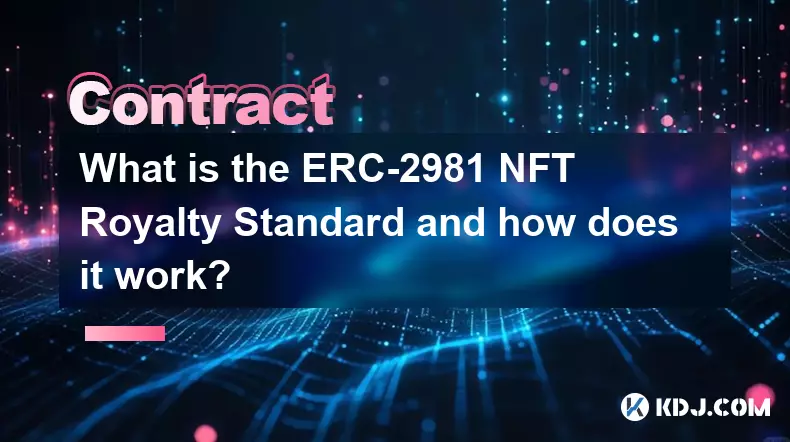-
 bitcoin
bitcoin $99296.318777 USD
-2.82% -
 ethereum
ethereum $3203.465899 USD
-6.84% -
 tether
tether $0.999590 USD
-0.03% -
 xrp
xrp $2.308913 USD
-4.00% -
 bnb
bnb $922.788929 USD
-3.53% -
 solana
solana $144.020807 USD
-5.89% -
 usd-coin
usd-coin $0.999798 USD
0.00% -
 tron
tron $0.291590 USD
-1.12% -
 dogecoin
dogecoin $0.163780 USD
-4.46% -
 cardano
cardano $0.526919 USD
-4.40% -
 hyperliquid
hyperliquid $37.888865 USD
-2.24% -
 bitcoin-cash
bitcoin-cash $510.515457 USD
-1.08% -
 chainlink
chainlink $14.436987 USD
-5.63% -
 stellar
stellar $0.267345 USD
-4.77% -
 unus-sed-leo
unus-sed-leo $9.175222 USD
0.53%
What is a cryptographic signature and how is it used to verify transactions?
Cryptographic signatures ensure blockchain transaction authenticity, integrity, and non-repudiation through private-key signing and public-key verification.
Nov 13, 2025 at 08:20 am

Understanding Cryptographic Signatures in Blockchain
1. A cryptographic signature is a mathematical mechanism used to verify the authenticity of digital messages or transactions. It relies on public-key cryptography, where each user has a pair of keys: a private key and a public key. The private key is kept secret and used to generate the signature, while the public key is shared openly to verify it.
2. When a user initiates a transaction in a blockchain network, they use their private key to create a unique signature for that specific transaction. This process ensures that only the rightful owner of the funds can authorize transfers, as forging the signature without access to the private key is computationally infeasible.
3. The signature is attached to the transaction data and broadcast across the network. Nodes receiving the transaction use the sender’s public key to validate the signature against the transaction content. If the verification passes, the transaction is considered authentic and eligible for inclusion in a block.
4. Unlike handwritten signatures, cryptographic signatures are different for every transaction even if sent from the same address. This prevents replay attacks and enhances security by ensuring each transaction is uniquely signed based on its content and timestamp.
5. These signatures play a critical role in maintaining trustless systems. Users do not need to rely on third parties to confirm ownership or legitimacy. Instead, cryptographic proof embedded within each transaction provides irrefutable evidence of authorization.
Role of Digital Signatures in Transaction Integrity
1. Digital signatures ensure that transaction data remains unaltered during transmission. Any modification to the transaction after signing invalidates the signature, making tampering immediately detectable by network nodes.
2. Each node independently verifies the signature using standardized algorithms such as ECDSA (Elliptic Curve Digital Signature Algorithm) commonly used in Bitcoin, or EdDSA in newer protocols like Solana. This uniformity allows decentralized consensus without centralized oversight.
3. The binding between the private key and the transaction output creates non-repudiation. Once a transaction is signed and confirmed, the sender cannot deny having authorized it, as only their private key could have produced the valid signature.
4. Wallet software automates the signing process, shielding users from handling complex cryptography directly. However, the security of the entire system hinges on safeguarding the private key—loss or exposure compromises all associated assets.
5. In multi-signature schemes, multiple private keys must sign a single transaction before it becomes valid. This adds layers of authorization, often used in corporate wallets or escrow services to prevent unilateral control over funds.
Verification Process Across Different Blockchains
1. On the Bitcoin network, every input in a transaction references a previous output and includes a scriptSig containing the signature and public key. Miners and nodes execute the validation script to check whether the signature matches the claimed public key and transaction hash.
2. Ethereum uses similar principles but integrates signatures into the transaction structure differently. Before execution, each Ethereum transaction is checked for correct v, r, s parameters derived from the signature, ensuring the sender has authority over the originating address.
3. Some blockchains implement Schnorr signatures, which allow multiple signatures to be aggregated into one. This improves scalability and privacy, as seen in Bitcoin's Taproot upgrade, where complex smart contracts appear indistinguishable from simple payments.
4. Layer-2 solutions like Lightning Network still depend on underlying chain signature mechanisms. Payment channel updates require mutual signing, enabling rapid off-chain transactions while retaining the ability to enforce settlement on-chain if disputes arise.
The integrity of the entire blockchain ecosystem depends on the strength and proper implementation of these cryptographic signatures. Without them, double-spending and impersonation would undermine trust in decentralized networks.Frequently Asked Questions
How is a private key linked to a cryptographic signature?A private key is used in a deterministic algorithm along with transaction data to produce a unique signature. This signature can only be generated by someone possessing the private key, yet anyone with the corresponding public key can verify its validity.
Can a cryptographic signature be reused for another transaction?No, each signature is bound to the exact content of a specific transaction. Altering any detail—even the fee or timestamp—requires a new signature. Reusing a signature for a different transaction will fail verification due to mismatched hash values.
What happens if someone gains access to my private key?They can generate valid signatures on your behalf and transfer your funds without your consent. There is no way to reverse this once transactions are confirmed, emphasizing the importance of secure key storage practices like hardware wallets and air-gapped systems.
Are all blockchains using the same signature algorithm?No, different blockchains adopt various cryptographic standards. Bitcoin uses ECDSA, Monero employs EdDSA, and some platforms experiment with post-quantum resistant algorithms. Interoperability often requires translation layers or wrapped assets to maintain signature compatibility.
Disclaimer:info@kdj.com
The information provided is not trading advice. kdj.com does not assume any responsibility for any investments made based on the information provided in this article. Cryptocurrencies are highly volatile and it is highly recommended that you invest with caution after thorough research!
If you believe that the content used on this website infringes your copyright, please contact us immediately (info@kdj.com) and we will delete it promptly.
- Crypto Carnage: Navigating Selling and Liquidations in a Wild Market
- 2025-11-14 16:50:01
- Mohammed Siraj's First Spell Woes: An India Teammate's Critique
- 2025-11-14 14:40:02
- BTC, ETH, and Altcoin Picks: Navigating the Crypto Landscape
- 2025-11-14 14:50:01
- Coin Toss Tales: Temba Bavuma's Wager and India vs. SA Showdown
- 2025-11-14 12:50:01
- Shubman Gill, WTC Final, and the Coin Toss: A New Yorker's Take
- 2025-11-14 15:05:01
- Aerodrome Takes Flight: Unifying Ethereum DeFi Liquidity Across Chains
- 2025-11-14 15:10:02
Related knowledge

What is a Denial of Service (DoS) attack in a smart contract and what are its common forms?
Nov 10,2025 at 05:20am
Understanding Denial of Service in Smart Contracts1. A Denial of Service (DoS) attack in the context of smart contracts refers to a scenario where a m...

What is a cryptographic nonce used for in transaction signing?
Nov 11,2025 at 05:59am
Understanding Cryptographic Nonces in Blockchain Transactions1. A cryptographic nonce is a random or pseudo-random number used only once in the contex...

How does inheritance work in Solidity smart contracts?
Nov 11,2025 at 10:40pm
Inheritance in Solidity: Building Modular Smart Contracts1. Inheritance in Solidity allows one contract to adopt the properties and functions of anoth...

What is the difference between an Externally Owned Account (EOA) and a Contract Account?
Nov 13,2025 at 04:00am
Understanding Externally Owned Accounts (EOA)1. An Externally Owned Account is controlled directly by a private key, which means only the holder of th...

What is the ERC-2981 NFT Royalty Standard and how does it work?
Nov 13,2025 at 05:39am
Understanding the ERC-2981 NFT Royalty Standard1. The ERC-2981 standard is a proposed Ethereum Request for Comment that introduces a royalty mechanism...

What is a Minimal Proxy Contract (EIP-1167) and how does it save gas on deployment?
Nov 12,2025 at 11:39am
What is a Minimal Proxy Contract (EIP-1167)?1. A Minimal Proxy Contract, standardized under Ethereum Improvement Proposal (EIP) 1167, is a lightweight...

What is a Denial of Service (DoS) attack in a smart contract and what are its common forms?
Nov 10,2025 at 05:20am
Understanding Denial of Service in Smart Contracts1. A Denial of Service (DoS) attack in the context of smart contracts refers to a scenario where a m...

What is a cryptographic nonce used for in transaction signing?
Nov 11,2025 at 05:59am
Understanding Cryptographic Nonces in Blockchain Transactions1. A cryptographic nonce is a random or pseudo-random number used only once in the contex...

How does inheritance work in Solidity smart contracts?
Nov 11,2025 at 10:40pm
Inheritance in Solidity: Building Modular Smart Contracts1. Inheritance in Solidity allows one contract to adopt the properties and functions of anoth...

What is the difference between an Externally Owned Account (EOA) and a Contract Account?
Nov 13,2025 at 04:00am
Understanding Externally Owned Accounts (EOA)1. An Externally Owned Account is controlled directly by a private key, which means only the holder of th...

What is the ERC-2981 NFT Royalty Standard and how does it work?
Nov 13,2025 at 05:39am
Understanding the ERC-2981 NFT Royalty Standard1. The ERC-2981 standard is a proposed Ethereum Request for Comment that introduces a royalty mechanism...

What is a Minimal Proxy Contract (EIP-1167) and how does it save gas on deployment?
Nov 12,2025 at 11:39am
What is a Minimal Proxy Contract (EIP-1167)?1. A Minimal Proxy Contract, standardized under Ethereum Improvement Proposal (EIP) 1167, is a lightweight...
See all articles










































































